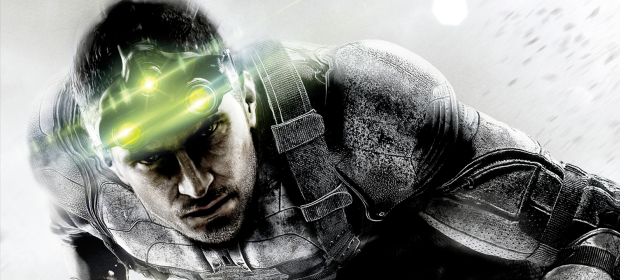Deep into one of the numerous incursions into enemy territory, as darkness surrounds you, a moment of realisation will dawn on you: Sam Fisher is one hell of a badass, and you are having an incredible amount of fun with the latest in the Splinter Cell series. It might be the fact that Ubisoft have refined Fisher’s stealth combat to a fine art, or it could be just that when you are given the tools to assert yourself on the way through a would-be battlefield and it all comes off as you planned, well, that’s a powerful feeling.
But such is the deep customisation in Blacklist, that even if everything goes to pot, you are more than likely going to have something in your possession that allows you to get out of a sticky situation. But what about when you don’t? Well, there are very few moments of outright frustration, because most of the time, when the alarms are triggered and you transform from predator to prey, it’s all your fault.
Taking place after the previous game (Conviction), Fisher is now heading up operations at Fourth Echelon (set up by the President, after she shut down Third Echelon). Taking orders directly from the President in their mobile plane-based operations locale The Paladin, Sam and the gang can quickly jet to different locations all over the world. It’s a good thing, too, as the titular Blacklist is a list of high-profile assets targeted by an organisation called The Engineers who want all the USA’s forces removed from the places they shouldn’t be. As a countdown marker reaches zero, a new hit will take place, and it’s up to Fourth Echelon to stop it.
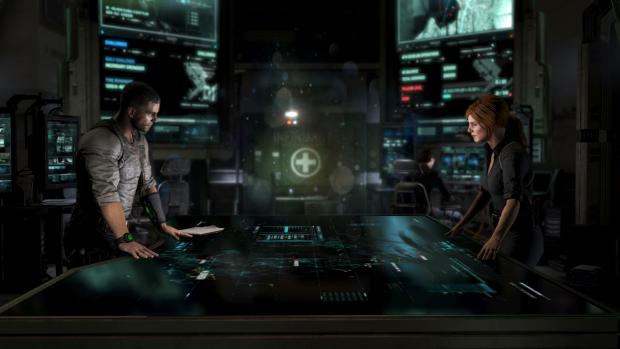
A lot of this takes place on the plane itself, which acts as a hub-area where Sam can walk around, chat with fellow Fourth Echelon members, customise, upgrade, and plan. Talking to different people will open different menus, whether it be the token computer nerd Charlie (gear upgrades), or Isaac the frustrated field-operative, now relegated to the plane during single-player missions (progress reports, stats). Should you wish, after each mission you can even go and phone your daughter, Sarah, to both fill her in on your status, and get information about your nearest and dearest back home. This all serves its purpose as a hub area and a place to customise your loadouts using the cash earned through missions, but a lot of the time the dialogue feels hokey and forced.
All this is forgiven though, when you actually play the missions through the Strategic Mission Interface (SMI), which opens a world map giving access to all manner of single player, co-op and competitive modes. There are even mini-game style missions that take place on the map, challenging your geography skills (or Google skills, I suppose) that involve chasing a paper-trail of sorts around the map, resulting in a choice that will give you a cash reward.
As you’d expect, each and every single player mission revolves around stealth. The locations are large enough to allow individual playing styles within the genre to come through, and the scoring system even rewards those play-styles. If you want to go gung-ho and load yourself up with automatic weapons and explosives, then you can (though I personally found that style, and indeed the situations that ended up that way, quite hard). There are different elements to the stealth, too, and Ghost scoring is related to complete stealth, whereas Panther allows for a combination of stealth and non-lethal takedowns. All of this is the icing on the cake, really, because each mission feels unique, despite often having the same ultimate goal.
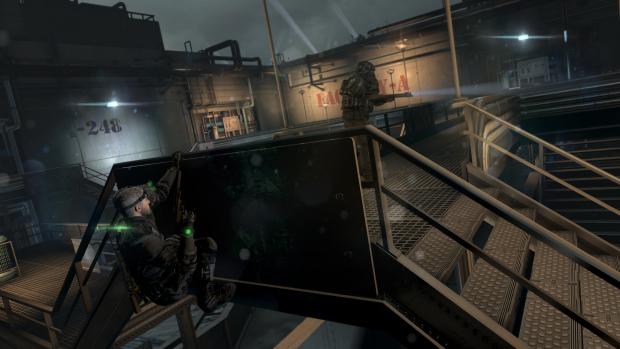
Each mission has a few smaller elements to it, such as hacking a laptop or picking up a dead drop, but somehow the main objective feels so exciting to take part in. One mission evolves from a simple hostage rescue into a biological terrorist attack. As the timer appears on screen warning you that you don’t have long, it’s a war against yourself to remain calm and execute the mission objective without being drawn into an all out fire-fight. Some missions will have moments of choice, where you must decide to show mercy or vengeance upon a target. It helps engage beyond the usual simplistic “go here, do that” methodology of a stealth game and adds unexpected colour and personality. The fact that some choices result in the same outcome is rather a shame, however, but these evolving missions are a constant feature and feel natural, which is something else that defines Blacklist: everything flows so beautifully. Some of this might be thanks to a seemingly borrowed idea from the Assassin’s Creed series. Holding down the “A” button (on Xbox 360) you can enable a sort of free-run mode, that will see Sam hurdle anything that gets in his way.
As Sam hides in the darkness, a flashing light informs the player that he’s completely hidden. Then, the planning starts. If I do X, then Y, that’ll hopefully allow me to do Z. It can be over in a flash, but the smooth nature of movement around the environments helps that flow greatly. Mark and Execute can be used to quickly eradicate a few enemies, as you only need to silently kill a few to fill the meter up, but it can also be used to track movement, along with the radar that you unlock fairly early on. Customisable goggles can eventually allow for footprint tracking, so you can watch exact enemy patrol routes. It gets deeper and deeper, if you want it to. Even Sam’s appearance is changeable, and alters stat meters that change the way you will play. Every weapon has upgrades and various different stats to pay attention to – even the accessories and gadgets can be upgraded, which means you can upgrade the trirotor to your heart’s content, and fly it around during missions, taking out unsuspecting enemies.
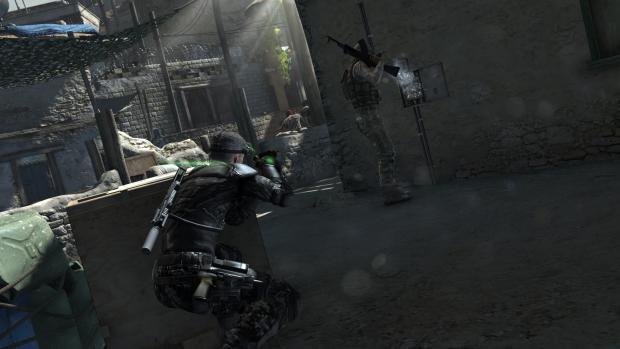
Generally speaking, Blacklist feels like an evolution of Conviction, with a bit of “old Splinter Cell” (but just a bit, don’t get too excited) thrown in for good measure. That said, there’s a new difficulty mode – Professional – that removes the execute order, only allowing you to tag targets, as well as removing the sonar goggles’ ability to see through walls. It even removes the restock ability when you find a weapon/ammo cache and, as you’d expect, is generally a lot harder, with enemies having more damaging firepower. Combined with the ability to customise the UI, there’s every chance that veteran Splinter Cell fans will find their ideal set-up somewhere in Professional mode. Enemy AI in general seems as good as is expected these days, and throwing dogs into the mix means there is more to take into account than just where to hide and plan.
Aside from the 10 or so main story missions, there are missions specific to play-styles that you’ll get from your crew aboard The Paladin – some of which are playable in solo, but which are mostly co-op missions. The single player will take you a good 10-15 hours to get through (depending on how you play and how much you value secondary objectives and side-quests) which leaves the hefty multiplayer modes and different difficulties as plenty of reason to come back to Blacklist.
Spies vs. Mercs returns, and is as glorious as it ever was. Classic mode is a simple 2v2 game where one team must hack three terminals as the other team tries to stop it happening. Blacklist has a new version of this that enables 4v4, doubling the player count, as well as enabling the full customisation from the standard single player game. Extraction (which reverses the roles of Spies and Mercs), Deathmatch, and Uplink Control (which basically amounts to a capture and defend mode) fill out the multiplayer options. Obviously your mileage may vary, but the classic Spies vs. Mercs mode is a superb amount of fun, and with a dedicated group of friends playing, there’s no reason that Blacklist will come out of the disc tray any time soon. Deathmatch is a standard addition, and not one that will be exciting to many, but options are always welcome.
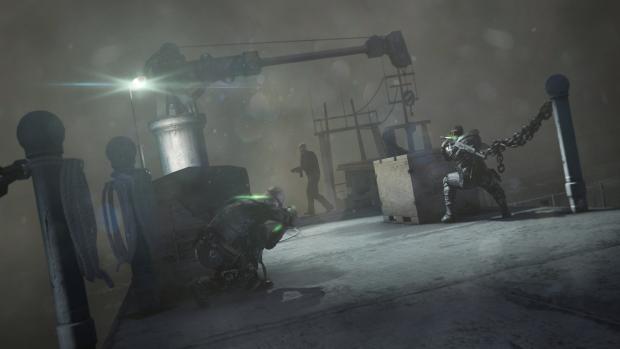
Much has been made of the new voice actor for Sam Fisher, and at first it’s definitely a grating change. But Eric Johnson does a good job of delivering a cold, borderline unfeeling protagonist that is all about the mission. Sam is as believable as he ever was, and as brutal as he needs to be. The surrounding cast delivers reasonably well, but there are some odd attempts at injecting humour, which fall pretty flat, coming as they do in a game that takes itself very seriously.
Blacklist is a gorgeous game, too, whether in daylight or darkness (where it really does look incredible). It’s clear that a painful amount of time has been taken to make sure that during missions, everything looks just so. The Paladin plays host to a few dialogue-based cut-scenes, and these (for whatever reason) don’t do the game a great deal of justice. It could be the sterile environment of a sparsely populated aeroplane, but the game just looks better in-mission.
VERDICT: Blacklist is a rewarding, truly excellent experience. Marred occasionally by elements non-essential to the actual player-controlled action, it’s hard not to fall head over heels in love with Fisher’s clandestine adventures once again. Bringing back classic Spies Vs. Mercs is a smart move that will please many, whereas offering a decent length single player adventure that is open enough for all play-styles and all-comers, whilst offering an optional challenge for the veterans, pays off. Blacklist really is a game all about options, and as such, is one not to miss.

SUPERB. This is the mark of greatness, only awarded to games that engage us from start to finish. Titles that score 9/10 will have very few problems or negative issues, and will deliver high quality and value for money across all aspects of their design.


